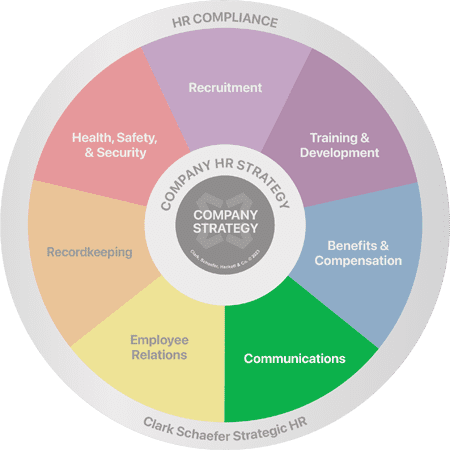Posts
Investigations With Intention
Last Updatedin Employee Relations, HR Compliance Question of the Week
NFP Workforce Reductions: Plan Ahead for Economic Shifts
Last Updatedin HR Strategy Question of the Week
Unleashing Employee Potential Through Competency-Based Job Descriptions
Last Updatedin Communications Question of the Week
HRIS Software – What Does “Determine Your Needs” Mean?
Last Updatedin Communications Question of the Week
Tips For How To Have Difficult Conversations With Employees
Last Updatedin Communications Question of the Week
Writing a Winning Employee Newsletter
Last Updatedin Communications Question of the Week
Contact Us
Clark Schaefer Strategic HR
10856 Reed Hartman Hwy
Suite 225
Cincinnati, OH 45242

Clark Schaefer Strategic HR is recognized by SHRM to offer Professional Development Credits (PDCs) for SHRM-CP® or SHRM-SCP® recertification activities.
The information provided on this website does not, and is not intended to, constitute legal advice; instead, all information, content, and materials available on this site are for general informational purposes only. Readers of this website should contact their attorney to obtain advice about their particular situation and relevant jurisdiction. This website contains links to other third-party websites. These links are only for the convenience of the reader, user or browser; Strategic HR does not recommend or endorse the contents of the third-party sites.



